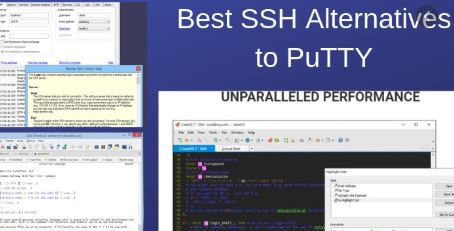- Telnet Clients For Mac Os
- Telnet Clients For Mac Download
- Mac Os Telnet
- Ssh Clients For Mac
- Telnet Client For Mac
- The client, usually playing the role of a terminal emulator may interpret some incoming characters a screen control codes (e.g. To place the cursor or change text color). In a way, a telnet client is a screen and keyboard hooked up to the server by a very very long cable (i.e.
- Free download Telnet Telnet for Mac OS X. Mocha Telnet makes it possible to connect to a host with the Telnet or SSH-2 protocol and emulate a VT220 terminal.
- As a Mac guy myself, I get that. But SyncTerm's purpose is to offer superior emulation when connecting with PC, Commodore, and Atari 8-bit BBSes. It's not meant to be a Mac command-line terminal. But putting those issues aside, it is far and away the best client for calling ANSI BBSes and MUDS.
Mac OS X High Sierra telnet / ftp solution. Hi folks, I looked at the solution proposed by @John Daniel. Ftp and telnet clients. Here is a step-by-step guide: 1. Using the built-in SSH client in Mac OS X. Mac OS X includes a command-line SSH client as part of the operating system. To use it, goto Finder, and selext Go - Utilities from the top menu. Then look for Terminal. Terminal can be used to get a local terminal window, and also supports SSH connections to remote servers.
Hi folks,
I looked at the solution proposed by @John Daniel - https://forums.developer.apple.com/message/235897#235897, and found that the inetutils gnu package contains many client and server applications. I have even noticed that many are already installed in the High Sierra. As I ldn't like to overwrite applications that are already come in OS X, I selected what to install, in my case, ftp and telnet clients. Here is a step-by-step guide:
1 - It is required that you have XCODE installed and configured to be able to compile the packages. Access the terminal / shell

2 - Download the latest version of the inetutils package, in my case inetutils-1.9.4, at:
3 - Unpack with:
tar xvjf inetutils-1.9.4.tar.gz

4 - Enter the inetutils-1.9.4 folder with:
cd inetutils-1.9.4
5 - Configure the package with the following:

./configure --disable-servers --disable-dnsdomainname --disable-hostname --disable-ping --disable-ping6 --disable-rcp --disable-rexec --disable-rlogin --disable-rsh --disable-logger --disable-talk --disable-tftp --disable-whois --disable-ifconfig --disable-traceroute
6 - To compile execute:
make
7 - For the installation I ddin't use make install, I preferred to copy only the necessary files to /usr/local/bin/ , as below:
sudo cp telnet/telnet /usr/local/bin/
sudo cp ftp/ftp /usr/local/bin/
8 - Now just test and use and be happy.
If you are new to the process of Telnet and have never accessed a Telnet BBS system before, the following is a mini-tutorial of how the Telnet process works and how to use a Telnet client.
Bulletin Board Systems (BBS) have been around long before the Internet. Traditional BBS systems that were “dial-up” based were accessed by dialing them directly with your analog telephone modem. This meant you used a “terminal program” to access these BBS systems. Accessing BBS systems via the Internet also requires a terminal program called a Telnet Client. While most operating systems have a built-in Telnet Client, we do not recommend these as they do not display the graphics correctly. Instead, we suggest any of the following free Telnet Client programs for your operating system (Windows, Linux, Mac OS X, etc.)
Telnet Clients For Mac Os
Telnet Client Programs
(Recommended)
SyncTerm (Windows, Mac OS X, Linux, etc.)
NetRunner (Windows, Linux)
EtherTerm (Windows, Linux)

mTelnet (Windows, OS/2)
There are other Telnet clients will work, but they are not free:
ZOC (Windows, Mac OS X)
Telnet Clients For Mac Download
NetTerm (Windows)
Command Line Telnet
(Not Recommended)
You can also use the command line from your operating system. Though this will work, the graphics may or may not display correctly.
Windows
By default, Windows does not install the Telnet Client in Windows anymore. You will need to “turn on” the Telnet Client first. Once that is turned on, you can either open up a Command Prompt, or run the Telnet command from the Run menu.

Click on Start, then Run. Then type in:
Telnet yourdomain.com
Where “yourdomain.com” is either a domain name (example – bbs.dmine.net) or a number (example – 127.0.0.1)
Example: telnet bbs.dmine.net
or
telnet 127.0.0.1
Mac Os Telnet
Linux, Mac OS X and other Unix
For Linux – Some Linux distributions do not have the Telnet Client installed. Run the appropriate “yum” command to install the Telnet client for your particular Linux distribution. Once the Telnet client is installed, open up a Terminal window. Then type in:
Ssh Clients For Mac
Telnet yourdomain.com
Where “yourdomain.com” is either a domain name (example – bbs.dmine.net) or a number (example – 127.0.0.1)
Example: telnet bbs.dmine.net
or
telnet 127.0.0.1
Telnet Client For Mac
Last updated: March 5, 2016
